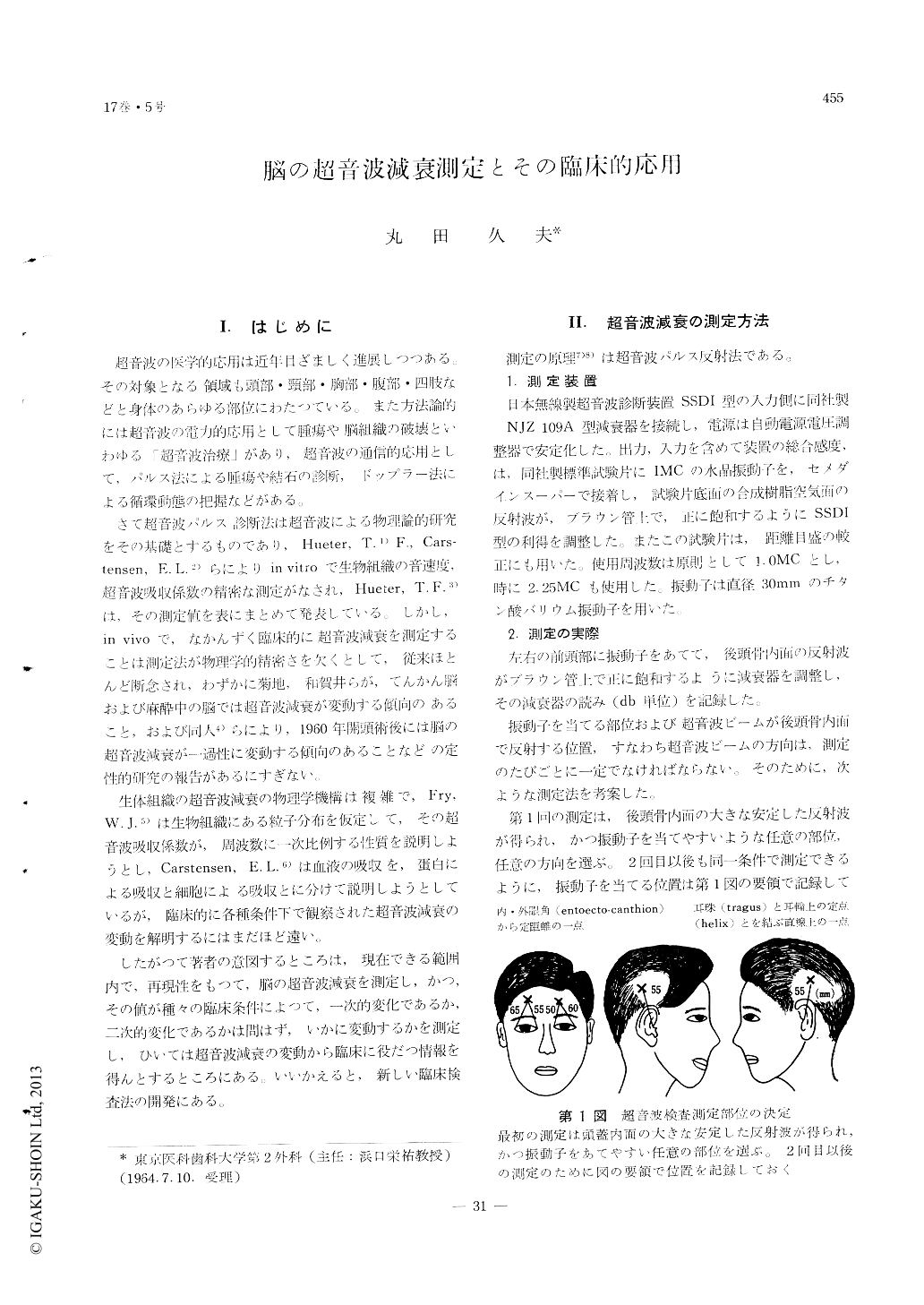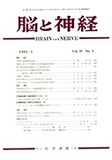Japanese
English
- 有料閲覧
- Abstract 文献概要
- 1ページ目 Look Inside
I.はじめに
超音波の医学的応用は近年目ざましく進展しつつある。その対象となる領域も頭部・頸部・胸部・腹部・四肢などと身体のあらゆる部位にわたつている、また方法論的には超音波の電力的応用として腫瘍や脳組織の破壊といわゆる「超音波治療」があり,超音波の通信的応用として,パルス法による腫瘍や結石の診断,ドップラー法による循環動態の把握などがある。
さて超音波パルス診断法は超音波による物理論的研究をその基礎とするものであり,Hueter, T. 1)F., Cars—tensen, E. L. 2)らによりin vitroで生物組織の音速度,超音波吸収係数の精密な測定がなされ,Hueter, T. F. 3)は,その測定値を表にまとめて発表している。しかし,in vivoで,なかんずく臨床的に超音波減衰を測定することは測定法が物理学的精密さを欠くとして,従来ほとんど断念され,わずかに菊地,和賀井らが,てんかん脳および麻酔中の脳では超音波減衰が変動する傾向のあること,および同人4)らにより,1960年開頭術後には脳の超音波減衰が一過性に変動する傾向のあることなどの定性的研究の報告があるにすぎない。
A reliable procedure for measuring the ultrasonic attenuation of human brain by reflection method using pulse wave of 1. OMC has been established for clinical use. The values of cerebral ultrasonic atten-uation (C. U. S. A.) were estimated in various clinical conditions as follows:
1) In cases of craniotomy (56 cases), the C. U. S. A. was increased as much as 4-8 db on the 2nd and/or the 3rd day after operation with gradual reduction to the resting level until the 5th-10th day. The close parallelism was observed between the C. U. S. A. change and that of the midline echo shift that indicated the increase of cerebal hemisphere volume of the operated side. It was concluded that the C. U. S. A. change was representing the grade of postoperative cerebral edema.
2) In cases of head injury (11 cases), the C. U. S. A. was increased immediately after the accident, followed by a decrease to the resting level at the 2nd or 3rd day in almost of the cases. The reincrease of the C. U. S. A. with the peak value on around the 4th day was observed in some of the cases. The fact that midline echo shift change did not coinci-dented with the early C. U. S. A. increase but only with the secondary C. U.S. A. increase indicated that the former should be due to temporaly cerebral blood circulatory change, while the latter, from the esta-blished cerebral edema.
3) In a case with the dumping syndrome, there was observed a intimate relationship between the C. U. S. A. and the circulatory plasma volume change. The finding further proved that cerebral circulatory change should reflect on the C. U. S. A.
4) During general anesthesia (12 cases), the C. U. S. A. showed a increase which did not exceed over 5db unless marked respirocirculatory complica-tions were occured. The prompt and marked increase of the C. U. S. A. on the complications suggested that it should be useful as a monitoring system during general anesthesia.
A new system with a high reliability for automatic and continuous measurement of the C. U. S. A. has been devised using the ultrasonic transducer with Wide-Beam Searchlight pattern.

Copyright © 1965, Igaku-Shoin Ltd. All rights reserved.


